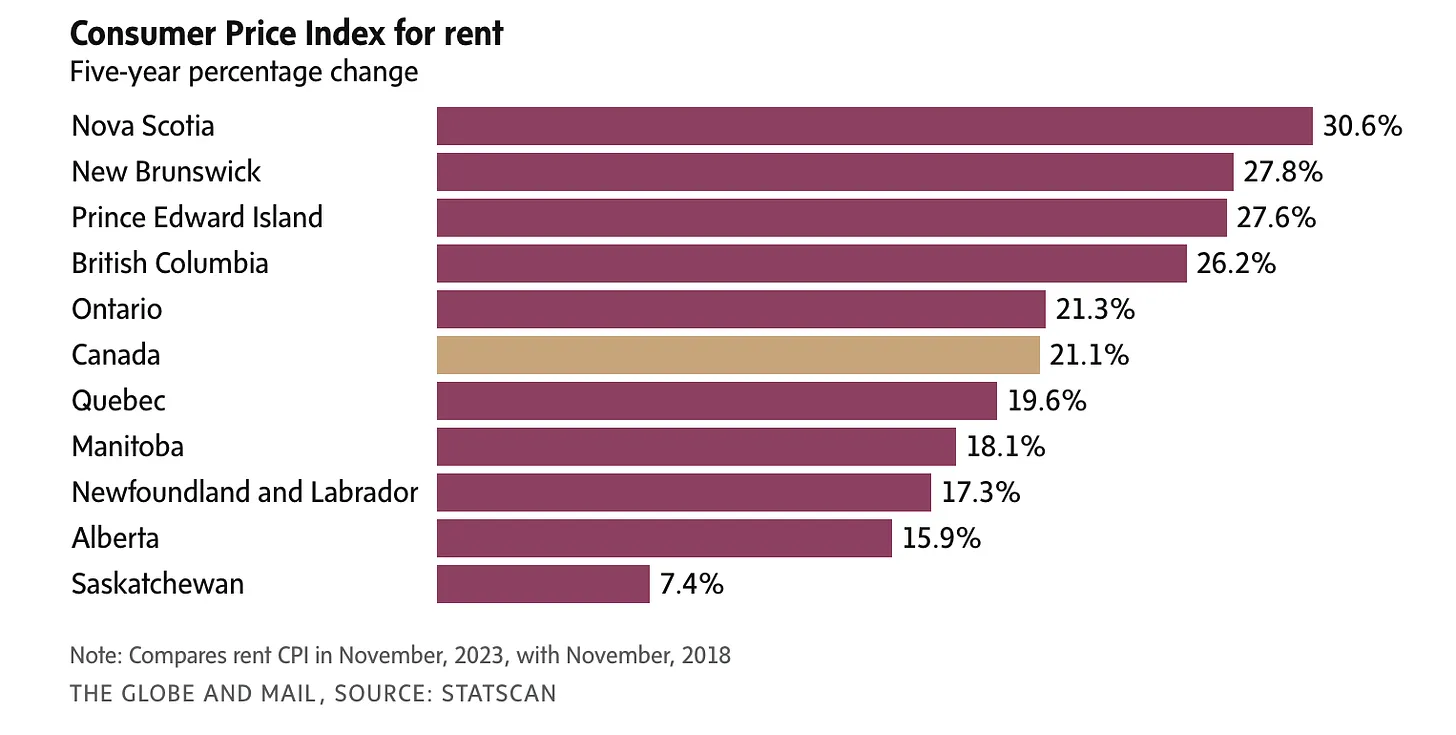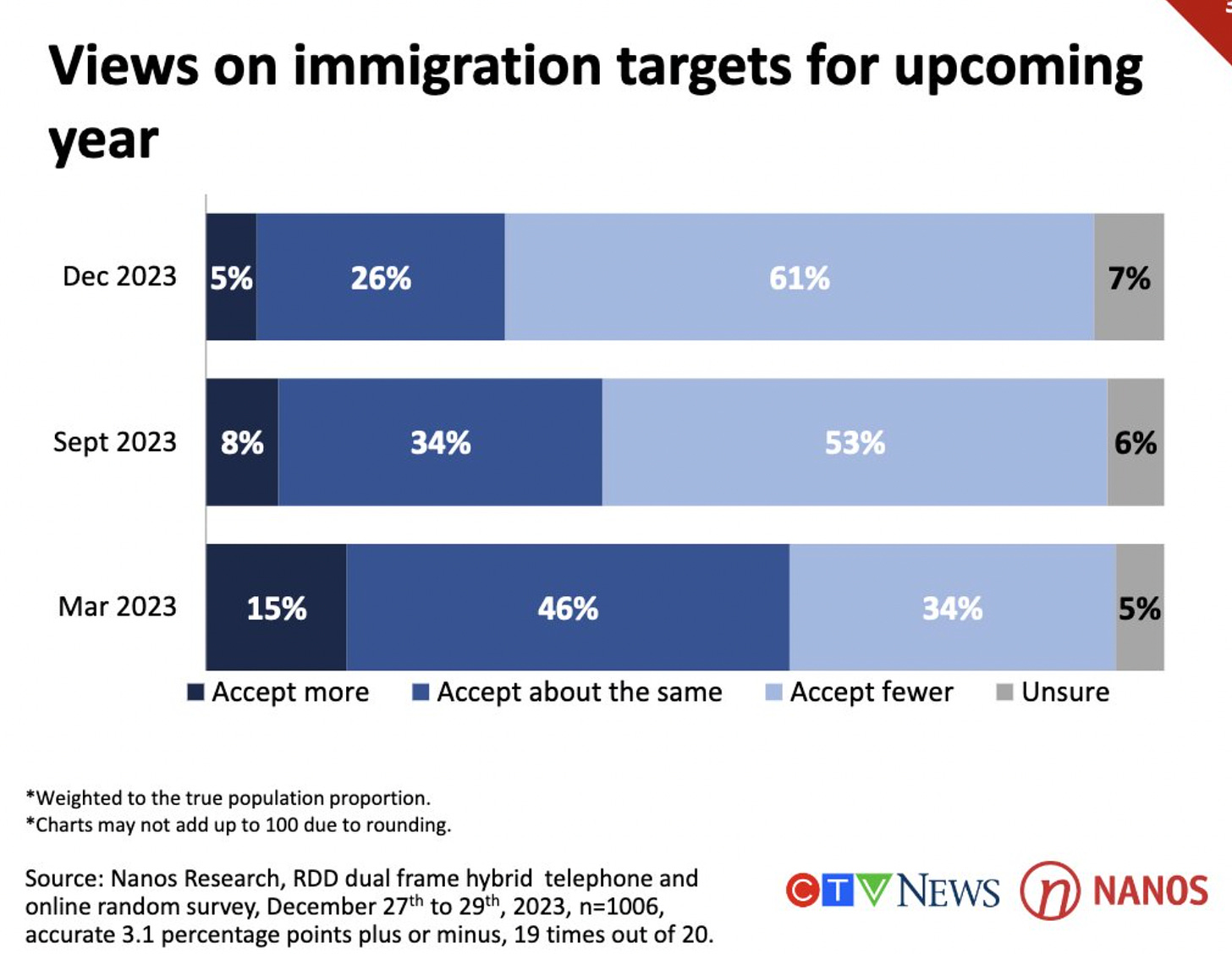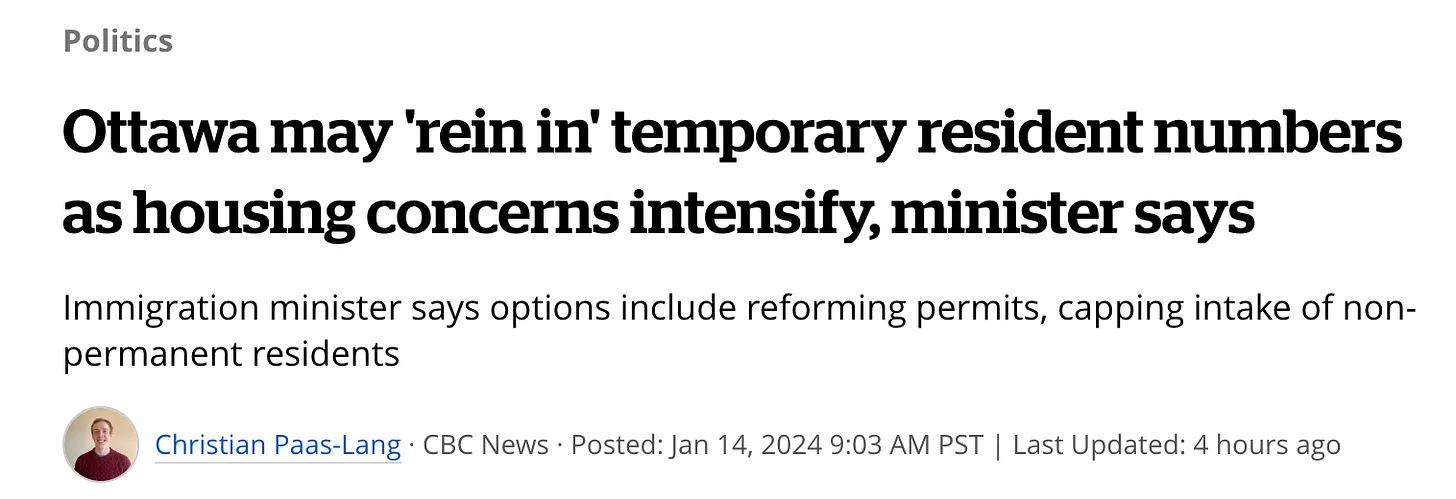January 15, 2024 | Two Year Warning

Happy Monday Morning!
We’ve talked a lot about immigration in this newsletter over the past couple of years. Immigration in Canada has always been considered an economic strength, the fact that people want to move here in large numbers is a testament to the desirability of this great nation. However, in recent years something has gone terribly wrong.
Canada’s population grew by a whopping 1.2 million people over the past year despite a federal immigration target closer to 500,000. As my friend Ben Rabidoux notes, the discrepancy comes from the fact that non-permanent residents are not included in the federal immigration target and have not been subject to any meaningful restrictions or caps. The growth of non permanent residents, which have no limit, has ballooned in recent years.

In the midst of an existing housing crisis we’ve opened up the door to seeminly anyone and everyone. We’re adding 1.2 million people (net) a year and only completing just over 200,000 new homes per year. In fact, the all time record high over a 12 month period is a messily 257,000 homes. In other words, it’s become a food fight for shelter. Rents have exploded higher in recent years, not only exacerbating an affordability crisis, but creating sticky inflation for the Bank of Canada and stoking the flames of anti-immigration sentiment.

According the latest Nanos polling, 61% of Canadians now believe we should be accepting fewer immigrants. The percentage of Canadians who believe immigration needs to be throttled has nearly doubled in less than a year.

How did things go so wrong, so quickly? The warning signs were there, including from this newsletter for which many policy makers subscribe. But i’m far from the only one, according to a recent report from the Globe & Mail, Ottawa was warned two years ago high immigration could affect housing costs. Documents revealed federal public servants were well aware of the pressures high population growth would have on housing and services.
“Rapid increases put pressure on health care and affordable housing,” public servants warned. “Settlement and resettlement service providers are expressing short-term strain due to labour market conditions, increased levels and the Afghanistan and Ukraine initiatives.”
Fast forward two years and here we are, trying to clean up the mess.

“That volume is disconcerting,” immigration Marc Miller noted in a recent interview. “It’s really a system that has gotten out of control.”
However, no immediate solutions have been offered, only that they may consider caps.
If only we could build more housing! Remember, the all time record is 257,000 new homes in a given year. According to BMO Economics we need 470,000 new homes just for the recent batch of newcomers. There is a near ZERO probability that we can deliver that many homes in a given year, barring a technological revolution in home building.
Building new housing supply requires skilled trades and an abundance of capital, both of which are in short supply these days. You are also at the mercy of a global commodity market which needs to deliver lumber, concrete, copper, steel, and aluminum, in a reasonably cost effective and predictable manner.
Ramping up new supply is not easy, but it can be done, just not for a million people a year, regardless of how much government rezones existing land.
If policy makers don’t get serious about fixing immigration, they’ll soon be out of a job. For some, it may already be too late.
STAY INFORMED! Receive our Weekly Recap of thought provoking articles, podcasts, and radio delivered to your inbox for FREE! Sign up here for the HoweStreet.com Weekly Recap.
Steve Saretsky January 15th, 2024
Posted In: Steve Saretsky Blog












Such an laugh; now this 32 year old loudmouthed realtor is all hopped up about “immigration”? As usual, he’s swinging the bat in the wrong game.